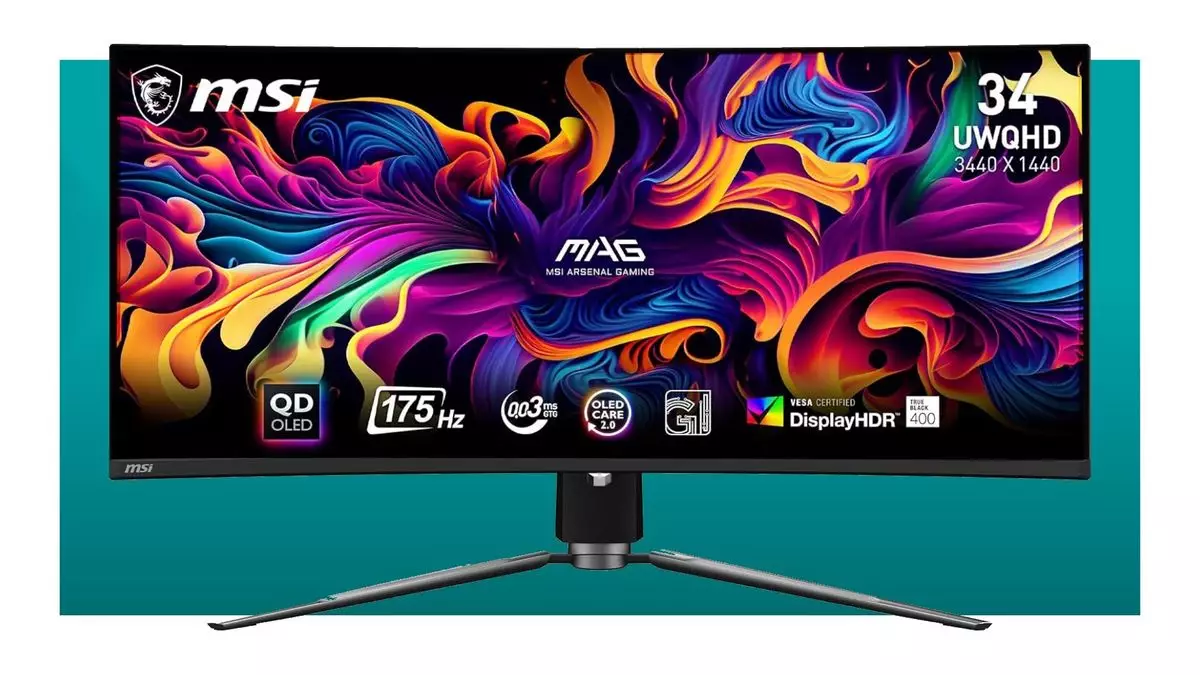The seamless and ever-evolving world of gaming monitors presents enthusiasts with two enticing options: the 32-inch 4K display versus the extravagant 34-inch ultrawide. Among these contenders, the MSI MAG 341CQP stands out as an affordable UWQHD option, priced at $680 on Amazon, presenting an interesting case for gamers and non-gamers alike. This article will critically evaluate these monitors, their advantages, disadvantages, and the overall cost-to-performance ratio.
When considering a 32-inch 4K monitor, such as the MSI MAG 321UP, currently priced at $800 on Newegg, the allure of high-resolution imagery is undeniable. The primary strength of 4K monitors lies in their exceptional pixel density, offering more than eight million pixels. This translates to an impressive level of detail, making it an excellent choice for creative professionals, such as graphic designers and video editors, who require accurate colors and sharp images. Additionally, non-gaming tasks, including multitasking with applications and enjoying high-resolution videos, are areas where 4K shines.
However, transitioning to a 4K resolution isn’t as straightforward as it might seem. The requirements for graphics processing power are formidable. To fully exploit the capabilities of a 4K monitor, users typically need to invest heavily in robust GPU technology, often leading to additional costs of $900 or more. Given the staggering requirements for high-performance gaming, many may find themselves limited when it comes to gaming frames per second (FPS) at such high resolutions. The significant GPU investment may dissuade casual gamers who prefer to keep their spending in check.
In contrast, the 34-inch MSI MAG 341CQP offers a more immersive gaming experience through its ultrawide format. While the pixel count of 3,440 x 1,440 may seem lower than that of a 4K display, it still provides nearly five million pixels—an impressive figure that is quite sufficient for many gamers. The more lenient demands on the GPU mean that an Nvidia RTX 4070 Super GPU, priced around $600, is adequate to run games smoothly, making this option far more accessible for those who do not wish to make a substantial investment in graphics hardware.
The immersive experience afforded by ultrawide gaming monitors is not to be underestimated. The wrap-around visual that takes advantage of peripheral vision can substantially enhance gameplay, particularly in action and adventure titles where situational awareness can be crucial. Coupled with a top-notch response time of 0.03 milliseconds and a refresh rate of 175 Hz, the MSI MAG 341CQP caters well to the needs of gamers who don’t necessarily require the absolute peak performance of 240 Hz.
Despite their benefits, ultrawide monitors are not devoid of potential problems. Like all OLED displays, burn-in remains a concern among users. Although modern OLEDs generally show mild burn-in even after prolonged use, the uncertainty regarding long-term durability can lead to hesitation in purchasing these types of monitors. MSI counters this issue by offering a three-year burn-in warranty, which provides some peace of mind; however, the long-term reliability after this period is still a matter of speculation.
Ultimately, your decision may revolve around how frequently you replace your hardware. If you have a tendency to upgrade every few years, this risk may be less of a concern. Conversely, those who prefer to keep their monitors for extended periods may need to consider the potential implications of burn-in more seriously.
The choice between a 32-inch 4K monitor and a 34-inch ultrawide ultimately boils down to individual priorities, budget, and intended use. If you require top-notch detail for creative tasks and have the budget for a robust GPU, the 32-inch 4K option is persuasive. However, for gamers looking for an immersive experience without the hefty GPU costs, the 34-inch ultrawide presents an attractive and more affordable alternative.
The MSI MAG 341CQP intensifies this debate with its affordability and immersive design, making a compelling case for ultrawide monitors in the current market. As technology progresses, the options available to consumers will only expand, making it imperative to stay informed and carefully consider personal preferences before making a significant investment in a new display.


Leave a Reply